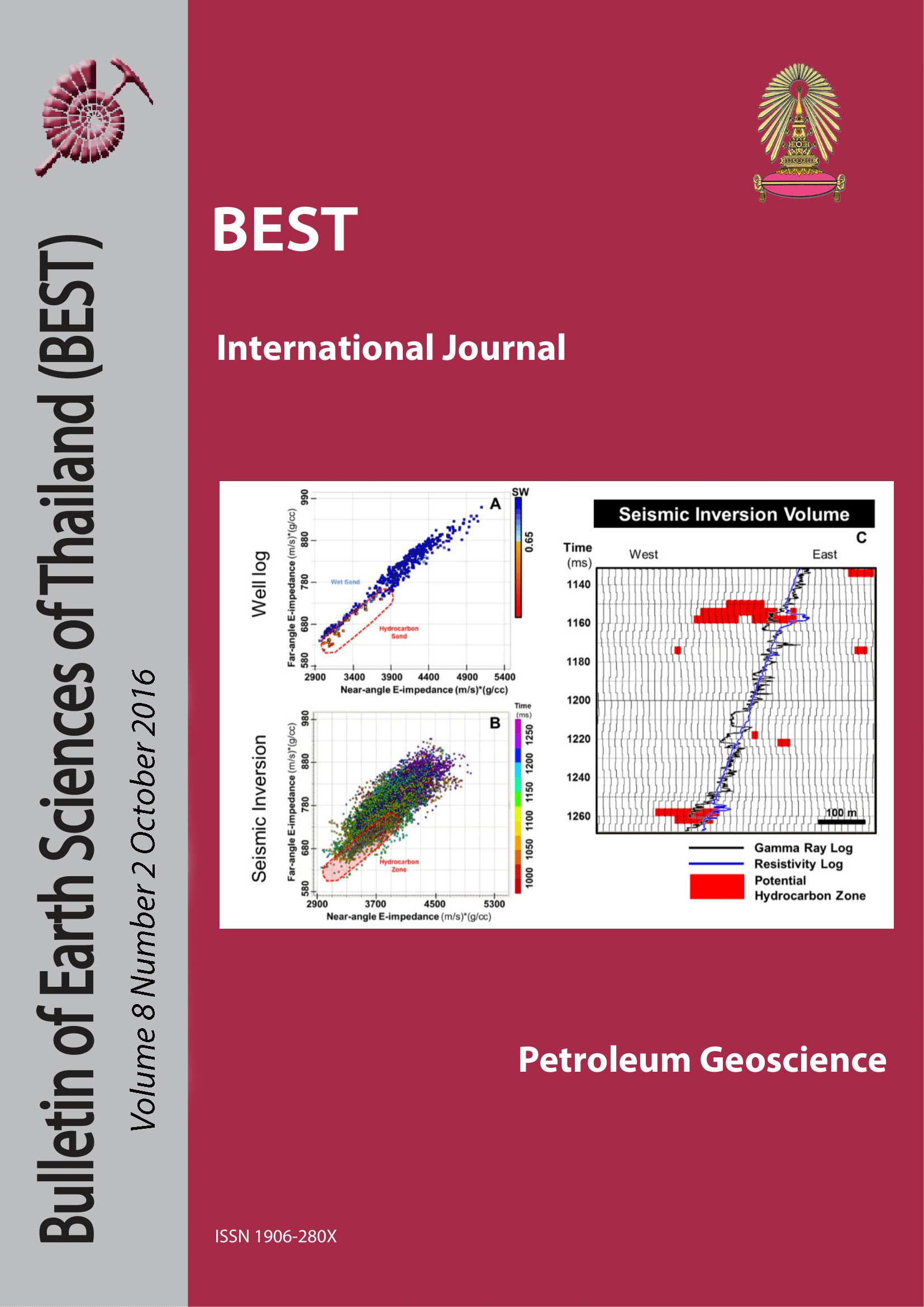MIDDLE CRETACEOUS RESERVOIR CHARACTERIZATION AND DEPOSITIONAL ENVIRONMENT OF CENTRAL ROVUMA BASIN, OFFSHORE MOZAMBIQUE USING SEISMIC ATTRIBUTES AND WELL LOG ANALYSIS
Main Article Content
Abstract
Rovuma Basin has huge commercial hydrocarbon discoveries in Tertiary progradational low-stand track (LST) sequence of Rovuma Delta. Oil shows were also identified at Cretaceous, Albian, LST progradational sequences, at both onshore and offshore close to study area. Cachalote-1 well at study area, discovered gas in thicker, stacked sand section with good quality reservoir in structural closure of Albian age. Buzio-1 well at same stratigraphic level, almost 27 Km away, drilled in a stratigraphic trap was dry. Both wells were drilled at high amplitudes seismic reflectors. The depositional environment of the study area was not understood and there are uncertainties about reservoir properties. The purposes of this study are to identify the sand reservoir, its spatial distribution and properties using seismic attributes and well log analysis and predict the depositional environment. To achieve the goal, 3D seismic full stack data and well data, including logs and petrographic report data were used for analysis and interpretation. Rock physics and well log analysis revealed that gas sand have low acoustic impedance than shale and brine sand. Seismic interpretation demonstrated the structural control of reservoir at southern part and stratigraphic control at northern. Seismic attributes such as similarity and RMS successfully mapped faults, channels and sand deposits. Attributes helped to better understand the deposi-tional environment. Integration of seismic interpretation with seismic attribute and well log analysis, calibrated with petrographic analyses demonstrated that the study area is dominated by progradational, LST sequence of deep water depositional environment and minor TST aggradational sequence. The sand reservoirs are mainly deposited as channel-levee systems at slope and basin floor fan as well as mouth bar distributaries at shelf edge to upper slope. These sands have good reservoirs properties, even with some thin cement stringers that may affect the flow.
Article Details

This work is licensed under a Creative Commons Attribution-NonCommercial-NoDerivatives 4.0 International License.
Copyright © 2008 Department of Geology, Faculty of Science, Chulalongkorn University. Parts of an article can be photocopied or reproduced without prior written permission from the author(s), but due acknowledgments should be stated or cited accordingly.
References
Chopra S. and Marfurt K. J., 2007 – Seismic attribute for prospect identification and reservoir characterization; Geophysical Development No 11.
Chopra S. and Marfurt K. J., 2012 – Seismic attribute expression of differential compaction; Arcis Seismic Solutions, Calgary; University of Oklahoma, Norman
D. Emery and K.J. Myers, 1996 – Sequence Stratigraphy; Blackwell Science, UK. Pg. 134 – 210
ENH and ECL, 2000 – The Petroleum Geology and hydrocarbon prospectivity of Mozambique `2000’ Volume 1
Mahanjane E., 2014 – The Davie Fracture Zone and adjacent basins in the offshore Mozambique Margin – A new insight for the hydrocarbon potential; Marine and Petroleum Geology Research paper No. 57 (2014) 561-571; Elsevier.
INP, 2013 – Cachalote -1, Mozambique Description of thin sections;
INP, 2013 – Búzio -1, Mozambique Description of thin sections;


